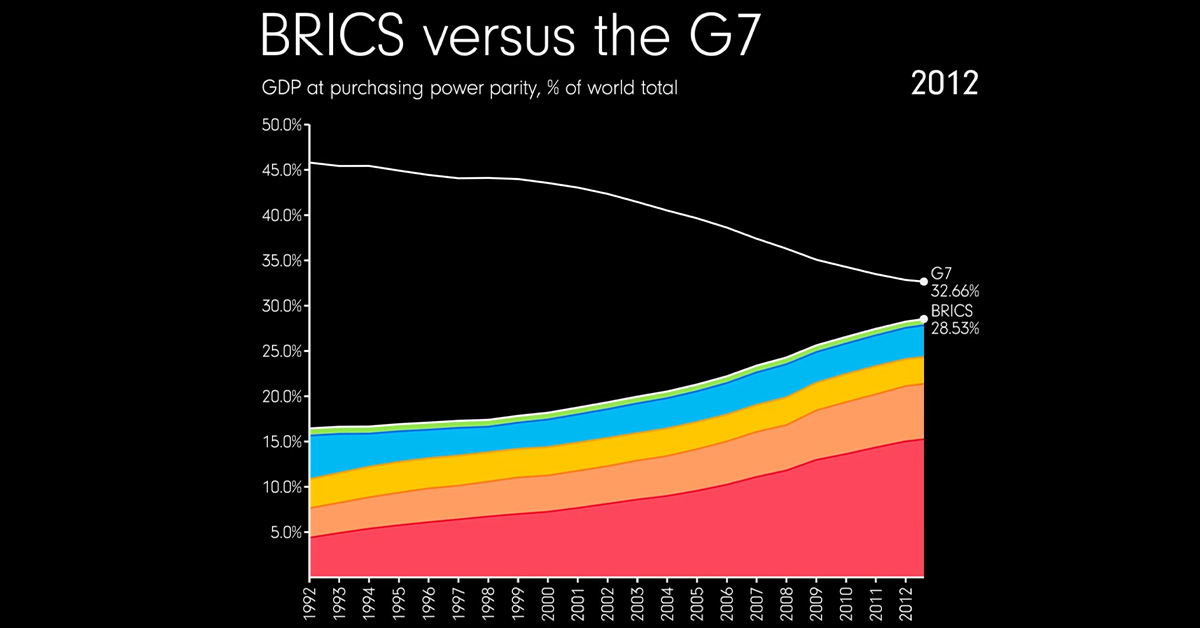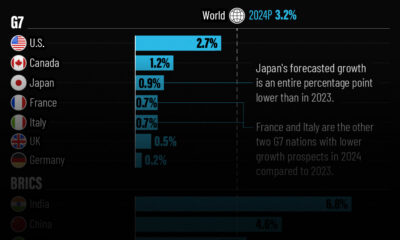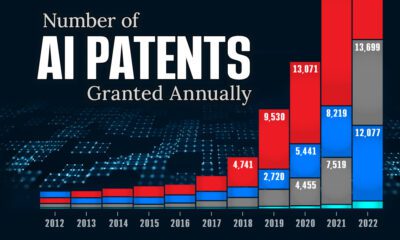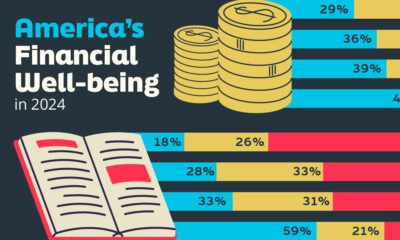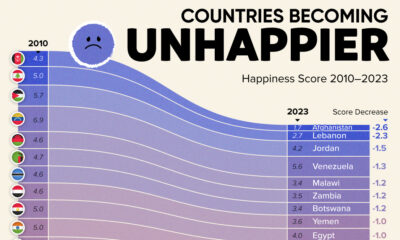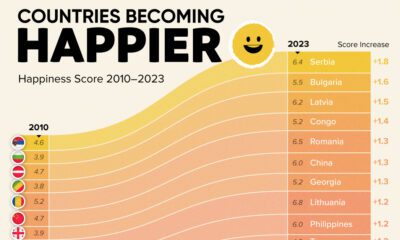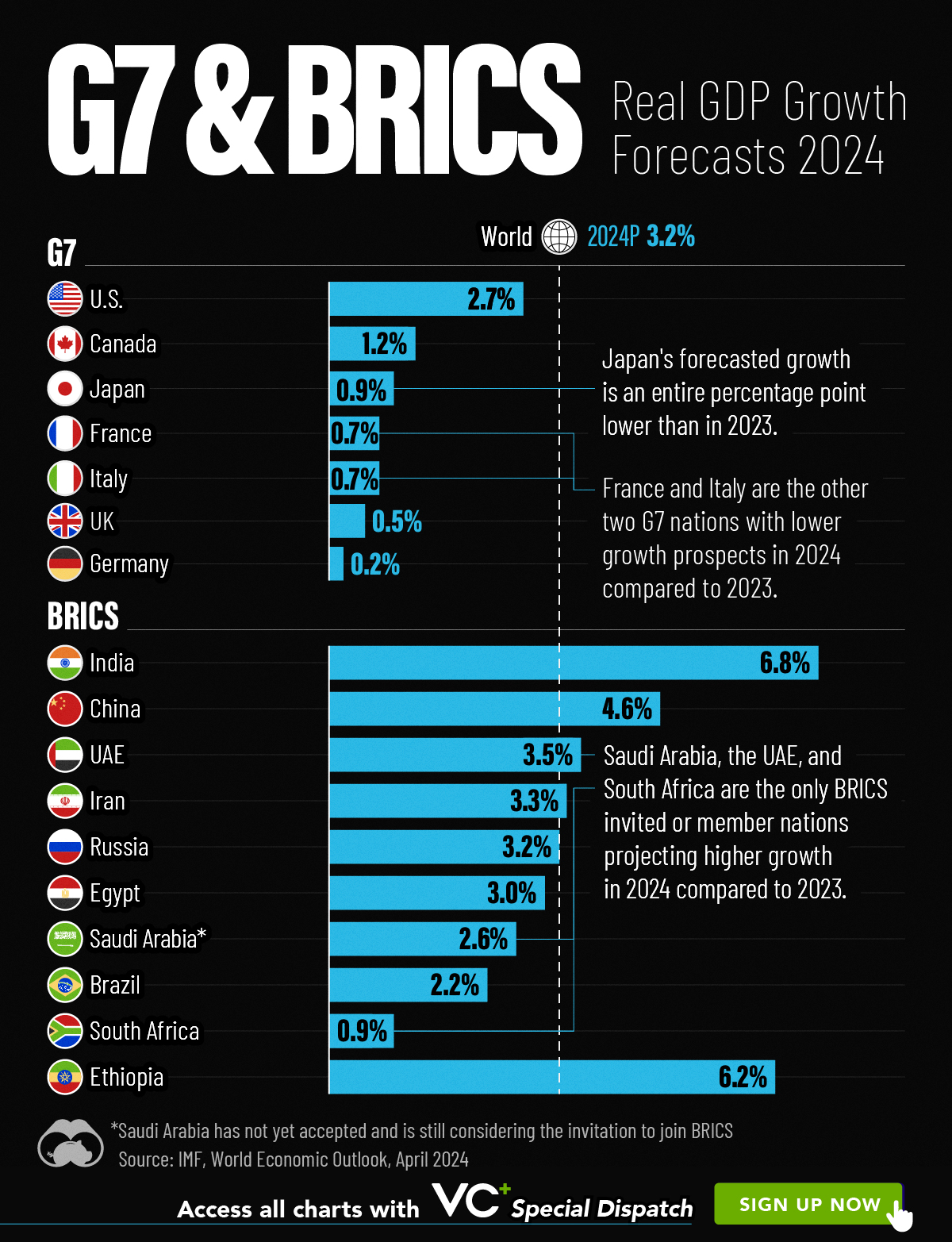Economy
Animated Chart: G7 vs. BRICS by GDP (PPP)
Animated Chart: G7 vs. BRICS by GDP (PPP)
Fifty years ago, the government finance heads from the UK, West Germany, France, and the U.S. met informally in the White House’s ground-floor library to discuss the international monetary situation at the time. This is the origin story of the G7.
This initial group quickly expanded, adding Japan, Italy, and Canada, to solidify a bloc of the biggest non-communist economies at the time. As industrialized countries that were reaping the benefits of the post-war productivity boom, they were economic juggernauts, with G7 economic output historically contributing around 40% of global GDP.
However, the more recent emergence of another international group, BRICS (Brazil, Russia, India, China, and South Africa), has been carving out its own section of the global economic order.
This animation from James Eagle uses data from the International Monetary Fund (IMF) and charts the percentage contribution of the G7 and BRICS members to the world economy. Specifically it uses GDP adjusted for purchasing power parity (PPP) using international dollars.
Charting the Rise of BRICS vs. G7
The acronym “BRIC”, developed by Goldman Sachs economist Jim O’Neill in 2001, was used to identify four fast-growing economies in similar stages of development. It wasn’t until 2009 that their leaders met and formalized their relationship, later inviting South Africa to join in 2010.
While initially banded together for investment opportunities, in the last decade, BRICS has become an economic rival to G7. Several of their initiatives include building an alternate global bank, with dialogue underway for a payment system and new reserve currency.
Below is a quick look at both groups’ contribution to the world economy in PPP-adjusted terms.
| Global GDP Share | 1992 | 2002 | 2012 | 2022 |
|---|---|---|---|---|
| BRICS | 16.45% | 19.34% | 28.28% | 31.67% |
| G7 | 45.80% | 42.34% | 32.82% | 30.31% |
A major contributing factor to BRICS’ rise is Chinese and Indian economic growth.
After a period of rapid industrialization in the 1980s and 1990s, China’s exports got a significant boost after it joined the World Trade Organization in 2001. This helped China become the world’s second largest economy by 2010.
India’s economic rise has not been quite as swift as China’s, but by 2022, the country ranked third with a gross domestic product (PPP) of $12 trillion. Together the two countries make up nearly one-fourth of the PPP-adjusted $164 trillion world economy.
The consequence of using the PPP metric—which better reflects the strengths of local currencies and local prices—is that it has an outsized multiplier effect on the GDPs of developing countries, where the prices of domestic goods and services tend to be cheaper.
Below, we can see both the nominal and PPP-adjusted GDP of each G7 and BRICS country in 2023. Nominal GDP is measured in USD with market-rate currency conversion, while the adjusted GDP uses international dollars (using the U.S. as a base country for calculations) which better account for cost of living and inflation.
| Country/Group | Membership | Nominal GDP (2023) | PPP GDP (2023) |
|---|---|---|---|
| 🇺🇸 U.S. | G7 | $26.9T | $26.9T |
| 🇯🇵 Japan | G7 | $4.4T | $6.5T |
| 🇩🇪 Germany | G7 | $4.3T | $5.6T |
| 🇬🇧 UK | G7 | $3.2T | $3.9T |
| 🇫🇷 France | G7 | $2.9T | $3.9T |
| 🇮🇹 Italy | G7 | $2.2T | $3.2T |
| 🇨🇦 Canada | G7 | $2.1T | $2.4T |
| 🇨🇳 China | BRICS | $19.4T | $33.0T |
| 🇮🇳 India | BRICS | $3.7T | $13.0T |
| 🇧🇷 Brazil | BRICS | $2.1T | $4.0T |
| 🇷🇺 Russia | BRICS | $2.1T | $5.0T |
| 🇿🇦 South Africa | BRICS | $0.4T | $1.0T |
| G7 Total | $46.0T | $52.4T | |
| BRICS Total | $27.7T | $56.0T | |
By the IMF’s projections, BRICS countries will constitute more of the world economy in 2023 ($56 trillion) than the G7 ($52 trillion) using PPP-adjusted GDPs.
How Will BRICS and G7 Compare in the Future?
China and India are in a stage of economic development marked by increasing productivity, wages and consumption, which most countries in the G7 had previously enjoyed in the three decades after World War II.
By 2028, the IMF projects BRICS countries to make up one-third of the global economy (PPP):
| Country by GDP (PPP) | Membership | % World Economy (2028p) |
|---|---|---|
| 🇺🇸 U.S. | G7 | 14.5% |
| 🇯🇵 Japan | G7 | 3.3% |
| 🇩🇪 Germany | G7 | 2.9% |
| 🇬🇧 UK | G7 | 2.1% |
| 🇫🇷 France | G7 | 2.0% |
| 🇮🇹 Italy | G7 | 1.7% |
| 🇨🇦 Canada | G7 | 1.3% |
| 🇨🇳 China | BRICS | 19.7% |
| 🇮🇳 India | BRICS | 8.6% |
| 🇷🇺 Russia | BRICS | 2.6% |
| 🇧🇷 Brazil | BRICS | 2.2% |
| 🇿🇦 South Africa | BRICS | 0.5% |
| G7 Total | 27.8% | |
| BRICS Total | 33.7% | |
BRICS vs. the World?
The economic rise of BRICS carries geopolitical implications as well.
Alongside different political ideals, BRICS’ increasing power gives its member countries financial muscle to back them up. This was put into sharp perspective after the 2022 Russian invasion of Ukraine, when both China and India abstained from condemning the war at the United Nations and continued to buy Russian oil.
While this is likely concerning for G7 countries, the group of developed countries still wields unparalleled influence on the global stage. Nominally the G7 still commands a larger share of the global economy ($46 trillion) than BRICS ($27.7 trillion). And from the coordination of sanctions on Russia to sending military aid to Ukraine, the G7 still wields significant influence financially and politically.
In the next few decades, especially as China and India are earmarked to lead global growth while simultaneously grappling with their own internal demographic issues, the world order is only set to become more complex and nuanced as these international blocs vie for power.

This article was published as a part of Visual Capitalist's Creator Program, which features data-driven visuals from some of our favorite Creators around the world.
Economy
Economic Growth Forecasts for G7 and BRICS Countries in 2024
The IMF has released its economic growth forecasts for 2024. How do the G7 and BRICS countries compare?
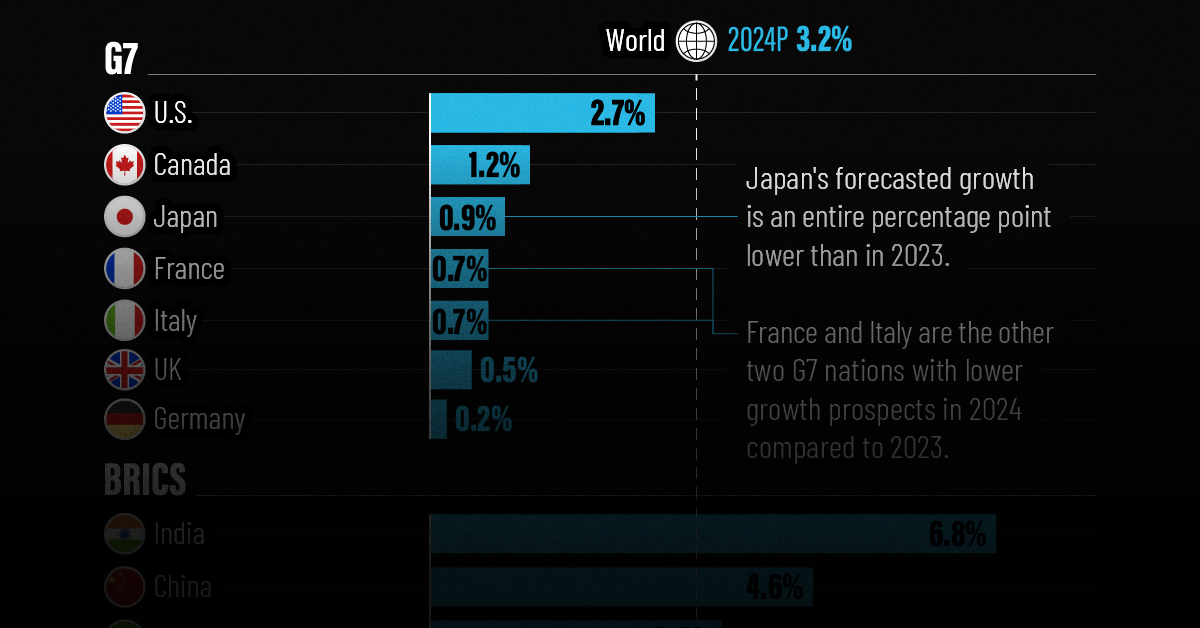
G7 & BRICS Real GDP Growth Forecasts for 2024
The International Monetary Fund’s (IMF) has released its real gross domestic product (GDP) growth forecasts for 2024, and while global growth is projected to stay steady at 3.2%, various major nations are seeing declining forecasts.
This chart visualizes the 2024 real GDP growth forecasts using data from the IMF’s 2024 World Economic Outlook for G7 and BRICS member nations along with Saudi Arabia, which is still considering an invitation to join the bloc.
Get the Key Insights of the IMF’s World Economic Outlook
Want a visual breakdown of the insights from the IMF’s 2024 World Economic Outlook report?
This visual is part of a special dispatch of the key takeaways exclusively for VC+ members.
Get the full dispatch of charts by signing up to VC+.
Mixed Economic Growth Prospects for Major Nations in 2024
Economic growth projections by the IMF for major nations are mixed, with the majority of G7 and BRICS countries forecasted to have slower growth in 2024 compared to 2023.
Only three BRICS-invited or member countries, Saudi Arabia, the UAE, and South Africa, have higher projected real GDP growth rates in 2024 than last year.
| Group | Country | Real GDP Growth (2023) | Real GDP Growth (2024P) |
|---|---|---|---|
| G7 | 🇺🇸 U.S. | 2.5% | 2.7% |
| G7 | 🇨🇦 Canada | 1.1% | 1.2% |
| G7 | 🇯🇵 Japan | 1.9% | 0.9% |
| G7 | 🇫🇷 France | 0.9% | 0.7% |
| G7 | 🇮🇹 Italy | 0.9% | 0.7% |
| G7 | 🇬🇧 UK | 0.1% | 0.5% |
| G7 | 🇩🇪 Germany | -0.3% | 0.2% |
| BRICS | 🇮🇳 India | 7.8% | 6.8% |
| BRICS | 🇨🇳 China | 5.2% | 4.6% |
| BRICS | 🇦🇪 UAE | 3.4% | 3.5% |
| BRICS | 🇮🇷 Iran | 4.7% | 3.3% |
| BRICS | 🇷🇺 Russia | 3.6% | 3.2% |
| BRICS | 🇪🇬 Egypt | 3.8% | 3.0% |
| BRICS-invited | 🇸🇦 Saudi Arabia | -0.8% | 2.6% |
| BRICS | 🇧🇷 Brazil | 2.9% | 2.2% |
| BRICS | 🇿🇦 South Africa | 0.6% | 0.9% |
| BRICS | 🇪🇹 Ethiopia | 7.2% | 6.2% |
| 🌍 World | 3.2% | 3.2% |
China and India are forecasted to maintain relatively high growth rates in 2024 at 4.6% and 6.8% respectively, but compared to the previous year, China is growing 0.6 percentage points slower while India is an entire percentage point slower.
On the other hand, four G7 nations are set to grow faster than last year, which includes Germany making its comeback from its negative real GDP growth of -0.3% in 2023.
Faster Growth for BRICS than G7 Nations
Despite mostly lower growth forecasts in 2024 compared to 2023, BRICS nations still have a significantly higher average growth forecast at 3.6% compared to the G7 average of 1%.
While the G7 countries’ combined GDP is around $15 trillion greater than the BRICS nations, with continued higher growth rates and the potential to add more members, BRICS looks likely to overtake the G7 in economic size within two decades.
BRICS Expansion Stutters Before October 2024 Summit
BRICS’ recent expansion has stuttered slightly, as Argentina’s newly-elected president Javier Milei declined its invitation and Saudi Arabia clarified that the country is still considering its invitation and has not joined BRICS yet.
Even with these initial growing pains, South Africa’s Foreign Minister Naledi Pandor told reporters in February that 34 different countries have submitted applications to join the growing BRICS bloc.
Any changes to the group are likely to be announced leading up to or at the 2024 BRICS summit which takes place October 22-24 in Kazan, Russia.
Get the Full Analysis of the IMF’s Outlook on VC+
This visual is part of an exclusive special dispatch for VC+ members which breaks down the key takeaways from the IMF’s 2024 World Economic Outlook.
For the full set of charts and analysis, sign up for VC+.
-
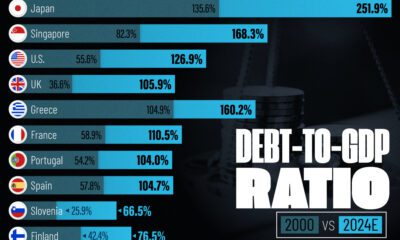
 Debt1 week ago
Debt1 week agoHow Debt-to-GDP Ratios Have Changed Since 2000
-

 Markets2 weeks ago
Markets2 weeks agoRanked: The World’s Top Flight Routes, by Revenue
-
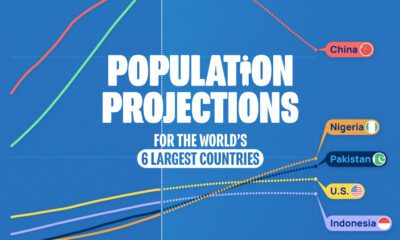
 Countries2 weeks ago
Countries2 weeks agoPopulation Projections: The World’s 6 Largest Countries in 2075
-
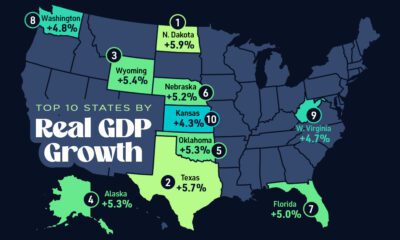
 Markets2 weeks ago
Markets2 weeks agoThe Top 10 States by Real GDP Growth in 2023
-
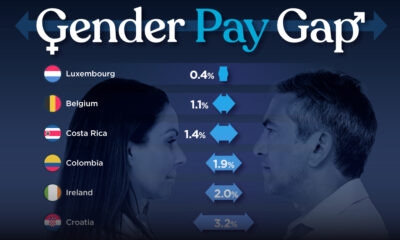
 Demographics2 weeks ago
Demographics2 weeks agoThe Smallest Gender Wage Gaps in OECD Countries
-
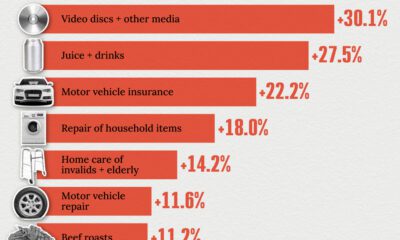
 United States2 weeks ago
United States2 weeks agoWhere U.S. Inflation Hit the Hardest in March 2024
-
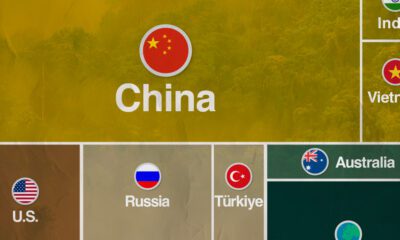
 Green2 weeks ago
Green2 weeks agoTop Countries By Forest Growth Since 2001
-

 United States2 weeks ago
United States2 weeks agoRanked: The Largest U.S. Corporations by Number of Employees

